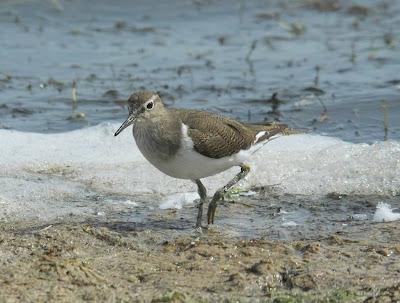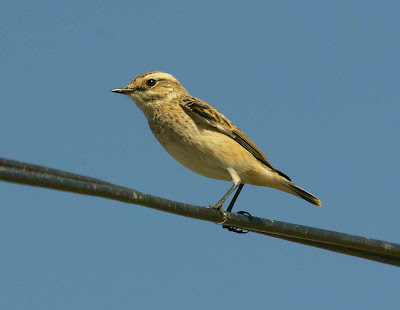 |
| One of the Reeves at Mandirac |
Stopping off at Lespignan there was little to seen except 2 Green Sandpipers and 3 Lapwings. In fact we did not see much until we reached the Gruissan area and made for Mandirac. The wet meadows were productive as usual with lots of Little and Cattle Egrets and the White Stork with the damaged wing which will probably stay there for ever. In addition there were also 17 Curlews and 9 Ruffs. The latter were all juveniles and there was only one male the rest being females or Reeves. Up to a dozen flava wagtails were feeding around the Black Cattle and overhead a Hobby was hunting the abundant myriads of dragonflies. 2 Marsh Harriers and a Buzzard passed by. On the saline pools c200 Greater Flamingos were feeding.
 |
| flava wagtail. |
 |
| Part of the feeding fenzy of herons and storks |
















































